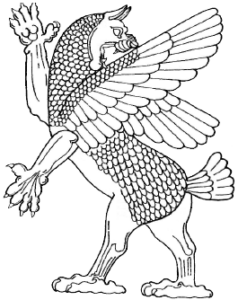Item number: 60125
A 900 grade silver vase in “Ivy leaf” pattern, Vienna 1910,
designed by Josef Hoffmann, executed by the Wiener Werkstätte
The oval shaped body standing on a flat base. The body decorated with square fields showing abstract, sculptural cloverleaf ornamentation with analogously decorated, curved handle. The silver frame holding the original glass liner of colourless glass.
An exceptional, rare work of the Wiener Werkstätte in excellent, original condition. The MAK, Vienna owns a contemporary photograph of this work from the Wiener Werkstätte estate (see here).
18.7 cm / 7.36″ length, 12.5 cm / 4.92″ width, 12.1 cm / 4.76″ tall; 180.5 g / 5.80 oz
The Vase bears the following hallmarks on the underside: WIENER WERKSTÄTTE, AUSTRIA, as well as the artist’s monogram “JH” for Josef Hoffmann, the maker’s mark “FK” of the executing silversmith, the rose mark as well as “WW” for the Wiener Werkstätte and the Austrian official hallmark for 900 silver, which was in use for the period 1872-1922. The other hallmarks are North American retailer´s marks and show that the vase was exported to the United States.
The vase was first entered in the Wiener Werkstätte model book on 9th August 1909 under the number S 1400 and was produced until 24th June 1911. The entry names Josef Hoffmann as the designer and contains a sketch with details of the materials and labour involved as well as the price calculation.
The hallmarks confirm the designer (monogram “JH” in a square) and the date of origin (the word mark WIENER WERKSTÄTTE was in use from 1909/10), while the goldsmith “FK” is unknown.
We would like to thank Dr Anne-Katrin Rossberg (MAK – Museum der angewandten Kunst, Vienna. Custodian for the Metal Collection and Wiener-Werkstätte Archive) for confirming the authenticity of this work.
The MAK holds the estate of the Wiener Werkstätte and, in addition to executed works and contemporary photographs, also owns a large part of the design drawings.
Josef Hoffmann and silver of the Wiener Werkstätte
Josef Hoffmann (Pirnitz, 1870 – Vienna, 1956) was a highly universal and productive architect and designer, whose relevance in art historical terms can only be compared to names as Henry van de Velde. Josef Hoffmann was a professor at the Vienna School of Applied Arts as well as a founding member of the Wiener Secession and later the Wiener Werkstätte.
The Wiener Werkstätte was an association of visual artists and founded in 1903 by Josef Hoffmann, Koloman Moser and the financier Fritz Waerndorfer. The aim of the company was to integrate art into the everyday life of the public. For this reason (comparable to the artists of the Arts & Crafts Movement) the Wiener Werkstätte devoted itself to the design and production of a comprehensive range of utilitarian and furnishing objects in the spirit of the “Gesamtkunstwerk”. The repertoire ranged from cutlery, bowls and trays, tea services, glass and porcelain to fabrics, wallpaper, curtains, furniture, jewellery and children’s toys. Characteristic of the Wiener Werkstätte’s creations was always high-quality craftsmanship, high aesthetic standards and individuality. Brass, silver-plated metal and silver were used in the production. Works by the Wiener Werkstätte in silver are less common, as these were already highly priced at the time. The company broke with the contemporary ornamental Art Nouveau style and produced groundbreaking modern designs – long before the terminology of “design” emerged.
With its artistically and qualitatively sophisticated products, the company enjoyed such success at times that it operated retail stores in New York, Zurich and Berlin, thus making the “Wiener Werkstätte” a brand of international renown. With the economic crisis of the interwar period and the increasing impoverishment of the middle class, the Wiener Werkstätte also got into economic difficulties, which led to its bankruptcy in 1932.
Alongside Koloman Moser and Dagobert Peche, Josef Hoffmann was the most important designer of the Wiener Werkstätte and produced an impressive number of different and sometimes extremely sophisticated designs. The “ivy leaf” pattern is one of the early patterns of the Wiener Werkstätte.









